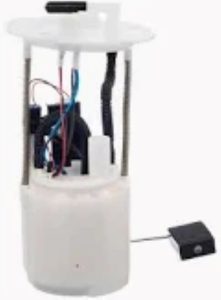A fuel pump can overheat due to low fuel levels, contaminated fuel or infrequent maintenance. Since electric fuel pumps, as found in most vehicles today by design, use the fuel in the tank as a coolant. Once the fuel level drops below 1/4 of a tank, the pump is partially exposed and begins to lose its primary source of cooling. The absence of fuel as a cooling agent will cause the pump to run at higher internal temperatures, which increases its chances of overheating. This risk multiplies over time, as continually operating the pump with insufficient fuel can lead to premature wear that often shortens a properly maintained pump’s lifespan from 100,000-150,000 miles to just 60,000 miles!
The other significant issue with overheating problem is fuel contamination Older vehicles may have dirt, rust, or other debris that clogs the fuel tanks. This puts contaminants in the fuel filter or pump dig, which creates more work for the pump to maintain fuel flow and this can also lead to an increase in internal temperature. In accordance To organization reports, fuel contaminated pumps can loss 15-20 percent efficiency growing the Work stress within the gadget. This extra work causes even more friction and heat, which is a double whammy, leaving it as a ticking time bomb as the CV joint will overheat and cause early failure!

Overheating is caused by electrical problems as well. Inconsistent voltage delivery due to bad connections, shitty wiring or shoddy replacement parts can destroy the ability of the pump to function properly. Most vehicles use a 12-volt system to power the electric fuel pump, and as the voltage drops, even by just a small amount, it makes more work for the pump to supply fuel (even if you don't notice while driving because there aren't really any other obvious symptoms of low electrical output). These added revs raise the internal temperature even more, which can lead to overheating in high-demand scenarios like highway cruising or towing a heavy load.
Safety is a major factor when considering the prevention of overheating, allowing to keep the plant working with safety ensuring a longer operating life of the fuel pump. Above 1/4 full, the pump has lubricant and stays cool when in operation so internal components do not overheat. Regular fuel filter changes—usually every 30,000 miles—and looking for contamination problems are also key to keeping the pump healthy. In places where the external temperatures also present a risk of overheating, these good practices are even more important.
Pump life is also affected by high-quality replacement parts. As Henry Ford said, “Quality means doing it right when no one is looking. When talking about fuel pumps, one should consider a good Fuel Pump online which offers solutions that are at or above the OEM level, resulting in optimum performance as well as protection from overheating issues.